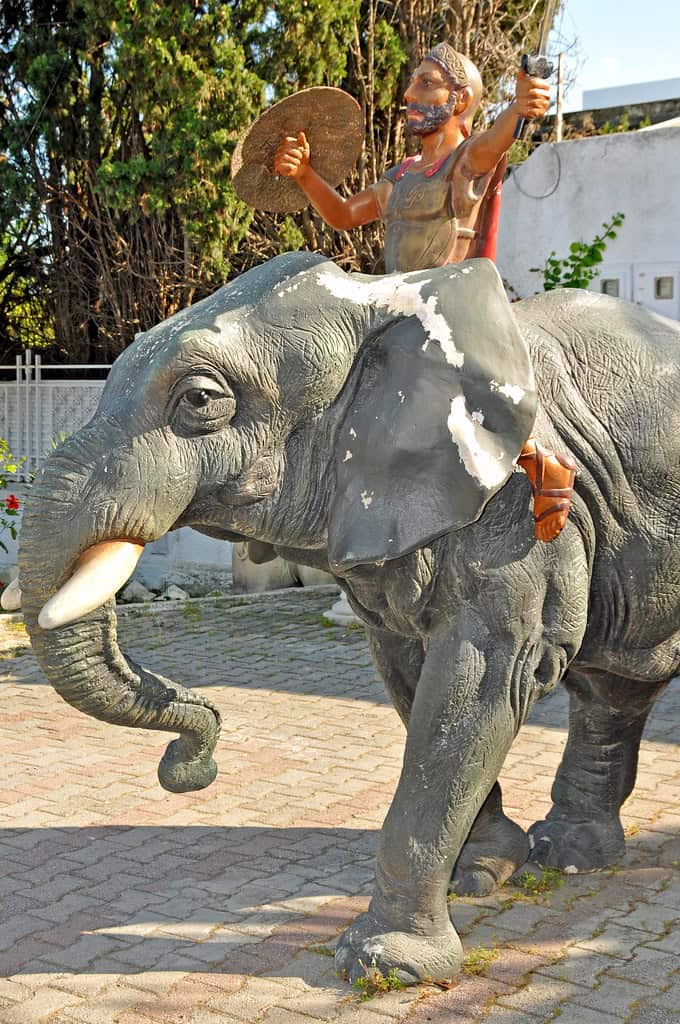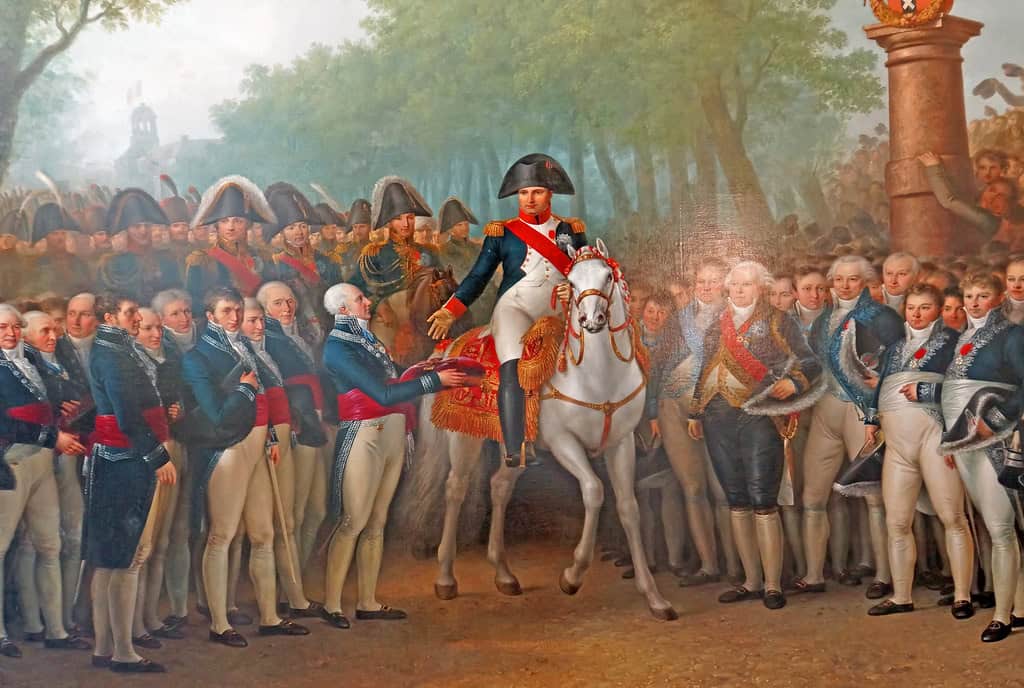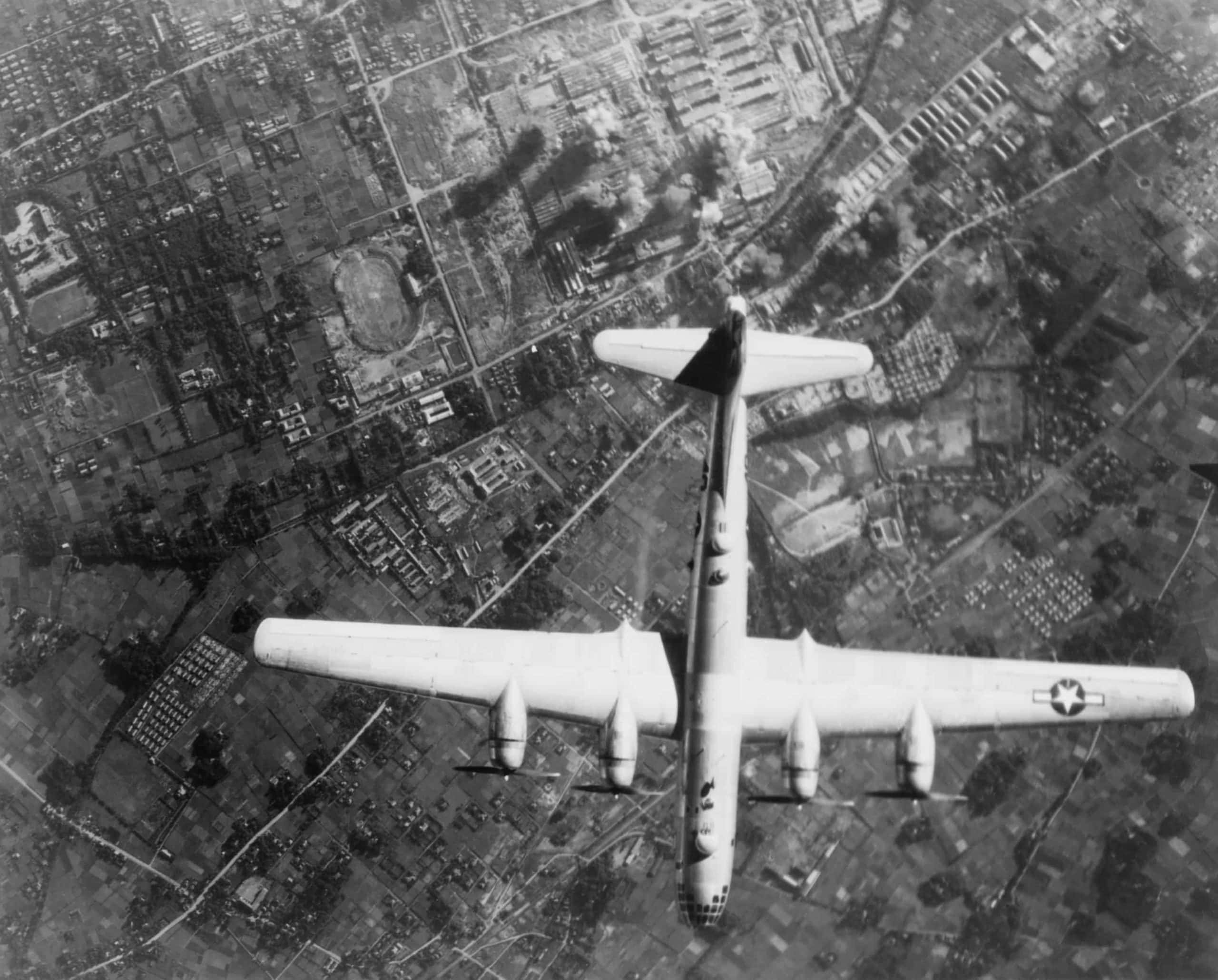Throughout the history of warfare, certain moments have changed the way nations conduct themselves in conflicts. It might see a shift in strategic doctrine, or a changing geopolitical landscape, but these moments fundamentally alter how wars are fought. It can be down to things like technological advances, pure chance, and sheer grit. These moments don’t just highlight the dynamics of military history, but show just how complex and evolving the history of warfare can be. Today, we’re looking at some pivotal moments through some key eras of military history.
The Ancient World

©"Tunisia-3016 – Hannibal" by archer10 (Dennis) is licensed under BY-SA 2.0. – Original / License
In 490 BCE, the Persians were poised to advance heavily into ancient Europe. The Achaemenid Persians were one of the dominant powers of the Ancient World, outclassing the Greek city-states time and time again. The Battle of Marathon was a turning point, as the outmanned Athenians were tasked with halting the Persian advance into Greece. Ultimately, the Athenians won the day, despite the numerical advantage afforded to the Persians. Who knows how Europe would’ve been changed, especially when considering the changes in culture, religion, and philosophy that the Persians would’ve brought to the Mediterranean.
Encirclement was always a risk in military actions during antiquity, but few generals were able to execute a double envelopment with ease like Hannibal during the Battle of Cannae in 216 BCE. The Romans pursued a deliberately weakened center, as Hannibal pushed his cavalry forward and across the sides. The Romans had the numerical advantage in the battle, fielding an estimated 86,400 soldiers to the 50,000 fielded by Carthage. The ensuing envelopment saw an estimated 67,500 to 80,000 Roman casualties, effectively taking multiple legions out of the running. Further, this double envelopment would inspire future generals, being studied by the likes of Napoleon Bonaparte and others as they made their names on the battlefield.
Medieval Warfare
The Battle of Hastings didn’t change the game necessarily in terms of warfare, but it changed the geopolitical balance of medieval Europe. William the Conqueror’s 1066 CE victory established Norman dominion over England, which fundamentally changed the nation for centuries to come. While William might not have made use of innovative tactics, the aftermath of his victory changed the way England was governed, the way the language was spoken, and England’s very culture to the core.
In broader events, the Siege of Constantinople in 1453 CE marked the final death of Roman rule, with the Byzantine Empire falling. It heralded a change in warfare as well, since gunpowder was crucial for the Ottoman victory. Constantinople’s fall effectively reshuffled the balance of power across Europe and the Middle East, and subsequently ignited the Age of Exploration as secure routes to Asia were no longer guaranteed. A single battle effectively altered the course of human history as we know it, albeit somewhat indirectly.
The Dawn of the Industrial Age

©"Netherlands-4426 – Arrival of Napoleon at Amsterdam" by archer10 (Dennis) is licensed under BY-SA 2.0. – Original / License
Tied to gunpowder, the dawn of muskets and cannons heralded a significant shift in the way wars were fought. This was readily seen in the wake of the French Revolution, with Napoleon Bonaparte fielding massive armies of conscripts. You no longer needed years of training for a ranged advantage; mere weeks to months would more than suffice. Napoleon’s legacy is marked by the Battle of Waterloo, the 1815 defeat that ended his ambitions of European domination. More importantly, it marked some thoroughly modern geopolitical implications, namely coalitions and collective security across nation-states.
National identity was a rather novel concept in the 19th century, as pan-American, German, and Italian identities were forged. This is seen best at the Battle of Gettysburg in 1863, where the United States of America prevailed against the Confederate States in a grisly battle. The subsequent Emancipation Proclamation was good press as well, as it framed the conflict around releasing fellow Americans from bondage in slavery, pushing forward the development of national democracies in the world.
The World Wars
In 1914, no one could’ve imagined the scale and scope of what would come next. World War 1 saw the massed armies of Europe dying in droves, with casualties ranging in the millions for major participants like France and Germany. This was readily seen at the Battle of the Marne, an early German offensive near the start of the war. Between Germany, the French, and British armies, you’re looking at nearly 600,000 casualties from a single battle. Warfare had changed. It had become industrialized, like the great factories churning out shells to support the war.
World War 2 is perhaps the first true modern war, codifying air and naval doctrine. Combined arms tactics took a prominent role in most combat theaters. Massive operations like D-Day, the largest amphibious landing in history, showed just what industrial power and logistics could bring to bear. Perhaps the biggest consequence of the Second World War was the creation of the atomic bomb and the ensuing arms race that would happen during the Cold War.
Modern Warfare

©DOD / Hulton Archive via Getty Images
The Gulf War in 1990 and 1991 showed just how much the battlefield had changed. Coalition forces made use of real-time targeting, satellite imagery, and digital command networks to effectively outclass all elements of the Iraqi military. It worked wonders, too, as Coalition forces suffered casualties totaling around 13,488, with 292 killed in action. The Iraqi military, which lacked the technological prowess of the United States, United Kingdom, and France, among others, saw an estimated 20,000 to 50,000 killed.
Modern warfare is heavily digitized, making use of command networks, drones, and electronic warfare to shape the battlefield of today. This is readily seen across the Russo-Ukrainian War, especially when looking at how both sides utilize makeshift drones to effectively nullify the advantage armored vehicles like tanks and infantry fighting vehicles pose.
Conclusion
If there’s a recurring theme we can look at when taking a look at some of the pivotal moments throughout the history of warfare, it isn’t that sheer force has won the day. Instead, it comes down to innovation and a willingness to press your advantages where you can. Further, these moments didn’t just change the course of wars, but fundamentally changed history. Who would Napoleon have studied without Hannibal at Cannae? Warfare is a constantly changing element, and one that encourages bold thinking, not just blunt force.
The image featured at the top of this post is ©Everett Collection/Shutterstock.com


